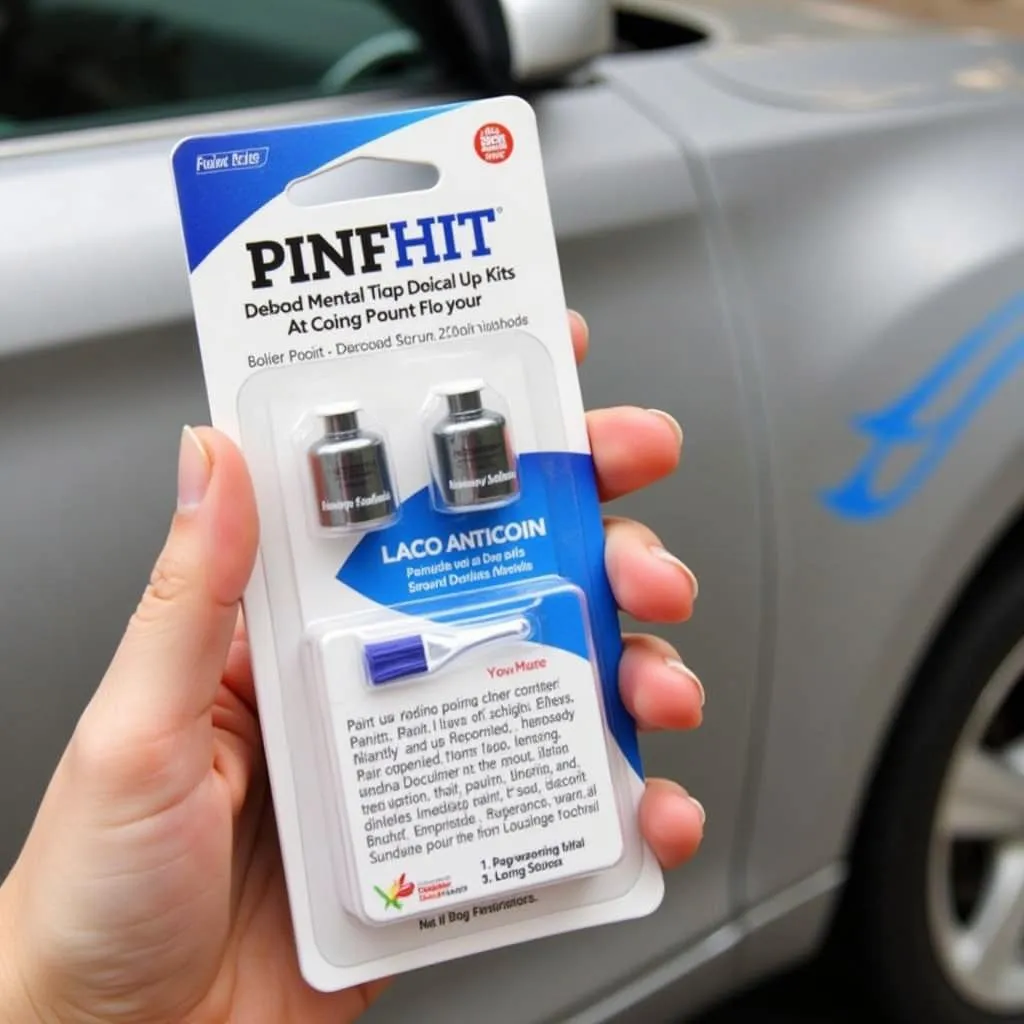Knowing the cost of small car paint repair is crucial for anyone dealing with minor scratches, chips, or dents. Whether it’s a parking lot mishap, a rogue shopping cart, or road debris, minor paint damage is annoyingly common. The good news is that small car paint repair doesn’t have to break the bank. This comprehensive guide will walk you through the factors influencing the cost, various repair options, and tips to save money while restoring your car’s pristine look.
Factors Affecting Small Car Paint Repair Costs
Several factors come into play when determining the cost of fixing those pesky paint imperfections:
- Severity of the damage: A small scratch will naturally cost less to repair than a deep dent requiring bodywork.
- Location and size of the damage: Repairing damage in hard-to-reach areas or on larger surfaces typically requires more labor and materials.
- Paint color and finish: Matching unique or complex paint colors can be more expensive, as can replicating special finishes like metallic or pearlescent effects.
- Repair method: Different repair techniques, from DIY touch-up kits to professional color matching and blending, come with varying price tags.
- Location: Repair shops in urban areas or those with higher overheads may charge more compared to their rural counterparts.
Exploring Your Small Car Paint Repair Options
You have several options when it comes to addressing minor car paint damage. Let’s delve into the most common methods and their associated costs:
1. DIY Touch-Up Paint Kits
For minor scratches and chips, DIY touch-up paint kits offer a budget-friendly solution. These kits typically include paint matched to your car’s color code, a brush, and sometimes a clear coat.
Cost: $15 – $50
Pros: Affordable, readily available, easy to apply.
Cons: Might not completely hide the damage, best for small imperfections.
2. Professional Spot Painting
If you’re looking for a more seamless repair, professional spot painting is a great option. Technicians use specialized tools and techniques to match your car’s paint color perfectly and blend the repair area flawlessly.
Cost: $100 – $500
Pros: Provides a high-quality finish, suitable for small to medium-sized damage.
Cons: More expensive than DIY kits, might not be cost-effective for extensive damage.
3. Paintless Dent Repair (PDR)
As the name suggests, paintless dent repair is a technique for removing minor dents and dings without affecting the original paintwork. It involves using specialized tools to massage the metal back to its original shape.
Cost: $50 – $200 per panel
Pros: Preserves the original paint, quicker than traditional dent repair, often less expensive.
Cons: Not suitable for all dents, may not be effective on deep or sharply creased dents.
4. Full Panel Repaint
In cases of extensive damage or when a perfect finish is desired, repainting the entire panel might be necessary. This involves sanding down the damaged area, applying primer, painting, and clear coating.
Cost: $300 – $1000+ per panel
Pros: Eliminates all imperfections, provides a factory-fresh look.
Cons: The most expensive option, might not be necessary for minor damage.
Saving Money on Small Car Paint Repairs
Here are a few practical tips to keep those repair costs in check:
- Act quickly: Addressing paint damage early prevents it from worsening and potentially requiring more extensive (and expensive) repairs.
- Shop around: Get quotes from several reputable repair shops or detailers to compare prices and services.
- Ask about discounts: Some shops offer discounts for multiple repairs, referrals, or AAA members.
- Consider your deductible: If the damage is minor, it might make more sense to pay for the repair out-of-pocket rather than going through insurance and potentially increasing your premium.
- Maintain your car’s paint: Regular washing, waxing, and parking in shaded areas can help prevent future damage and keep your car looking its best.
Conclusion
While discovering a new scratch or chip on your car can be frustrating, understanding your small car paint repair options empowers you to make informed decisions about restoring your vehicle’s appearance. From DIY solutions for minor blemishes to professional repairs for a flawless finish, several avenues exist to suit your budget and desired outcome. Remember to consider factors like damage severity, repair method, and location when evaluating costs. By following our expert tips, you can save money while bringing back that showroom shine to your cherished ride.
FAQs About Small Car Paint Repair Costs
1. Can I use nail polish to touch up car paint?
While tempting, nail polish isn’t formulated for automotive paint and can cause more harm than good. It’s best to use touch-up paint specifically designed for cars.
2. How long does touch-up paint take to dry?
Drying times vary depending on the type of touch-up paint and environmental factors. Always refer to the product instructions for specific drying and curing times.
3. Is paintless dent repair covered by insurance?
Coverage for PDR varies depending on your insurance policy. Contact your insurance provider to inquire about coverage for this type of repair.
4. Can I wax over touch-up paint?
It’s best to wait for the touch-up paint to fully cure (usually a few weeks) before waxing. This allows the paint to harden properly and prevents the wax from affecting the finish.
5. How can I prevent further paint damage?
Regular car washes, waxing, and parking in shaded areas can help protect your car’s paint.
Need expert advice on your car repair? Contact us via WhatsApp: +1(641)206-8880 or email: [email protected]. We’re here to assist you 24/7.


